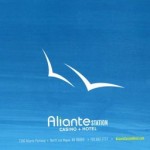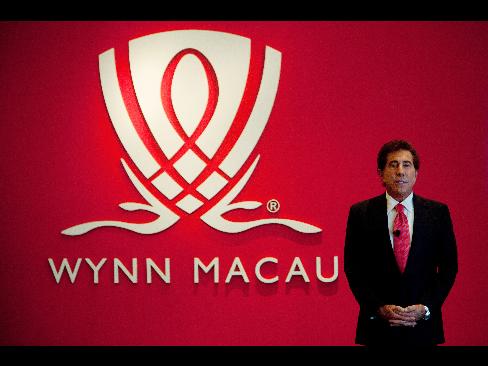September’s Nevada gaming revenue numbers are in and the good news is that the Strip is only -4% year/year. (Strip revs were down all of ’08 but didn’t fall off the cliff until October, when they tumbled 26%.) This makes September officially the Least Sucky Month of 2009, both for the Strip and statewide (-9%). Baccarat win was up 30% despite weak hold and table win grew 8%, but Strip slot revenues were -13%, despite a 4% bump in visitation.
Both hotel occupancy (83%) and ADRs ($91.18, -19%) continued to suffer, partly because of added rooms — and despite an impressive ramp-up (12%) in conventioneers. (September 2008’s convention stats were ghastly, with 18% fewer meetings held and -27% attendees. Put that in your pipe and smoke it, Steve Wynn.)
 The ravages of the depression on Nevadans’ wallets were felt, though, with locals casinos posting a 22% plunge (-28% on the Boulder Strip). At least the addition of Aliante Station cushioned the blow for North Las Vegas, down a mere 8% — and the only revenue-positive market of 2009.
The ravages of the depression on Nevadans’ wallets were felt, though, with locals casinos posting a 22% plunge (-28% on the Boulder Strip). At least the addition of Aliante Station cushioned the blow for North Las Vegas, down a mere 8% — and the only revenue-positive market of 2009.
Silver Lining Dept.: Hotel occupancy came at the expense of motels (52% in September), as aggressive discounting is evidently prompting customers to upgrade. Also, negative trends in Reno and other Northern Nevada markets have moderated, unlike places like Mesquite and Primm, whose troubles appear to be deepening despite higher drive-in traffic (+10% from California alone).
Bill Yung’s penny-pinching ways paid off for Columbia Sussex this year. A 3% revenue increase allowed the casino-hotelier to cling to the top spot in the 2009 Deloitte Cincinnati USA 100. What does it say about the Queen City’s economy that ColSux is its colossus?
 “The best balance sheet in gaming.” That’s what J.P. Morgan analysts say about Wynn Resorts. They like it even more if Wynn’s Cotai Strip™ project gets built. They estimate it could add as much as $13 value per share. Wynn doesn’t have the biggest market capitalization or cash flow, but his debt schedule puts Las Vegas Sands and MGM Mirage to shame. He’s slated to be down to just under $1 billion in two years, when LVS and MGM will be awash in $11 billion and $12 billion in net debt, respectively.
“The best balance sheet in gaming.” That’s what J.P. Morgan analysts say about Wynn Resorts. They like it even more if Wynn’s Cotai Strip™ project gets built. They estimate it could add as much as $13 value per share. Wynn doesn’t have the biggest market capitalization or cash flow, but his debt schedule puts Las Vegas Sands and MGM Mirage to shame. He’s slated to be down to just under $1 billion in two years, when LVS and MGM will be awash in $11 billion and $12 billion in net debt, respectively.
New gaming-capacity infusions in Macao are smallish for the next two years: 300 tables and twice as many slots at Stanley Ho‘s Oceanus, plus a smattering of new positions elsewhere in 2010, followed by Galaxy World‘s 450 tables and 1,000 slots in 2011. But in 2012 Sheldon Adelson is expected to drown Cotai in 790 new tables and 3,500 more slots (while Galaxy World expands with 680 additional tables and slots). Can Wynn beat Adelson to market? Given Adelson’s track record for almost never opening on schedule, this is one race where the hare has to be favored over the tortoise.
Fewer G2E fireworks? This year’s Global Gaming Expo “State of the Industry” panel has been announced and it will be the first in memory not to feature the harrumphing presence of Harrah’s Entertainment CEO Gary Loveman. Which is too bad, given that last year saw him and AGA President Frank Fahrenkopf exchanging some sharp passive-aggressive jabs, to say nothing of Loveman unloading a truckload of patronizing hot air on then-IGT CEO T.J. Matthews.
This year’s round-up is a far cry from the days when “State of the Industry” meant The Gary & Terry Show (as in Loveman and Lanni). Boyd Gaming CEO Keith Smith is on board, along with Isle of Capri COO Virginia McDowell, Aristocrat Technologies President Nick Khin and Guillermo E. Gabella of Boldt S.A. It’s nice to see continuing movement away from “State of the Industry” U.S.-centric past.

